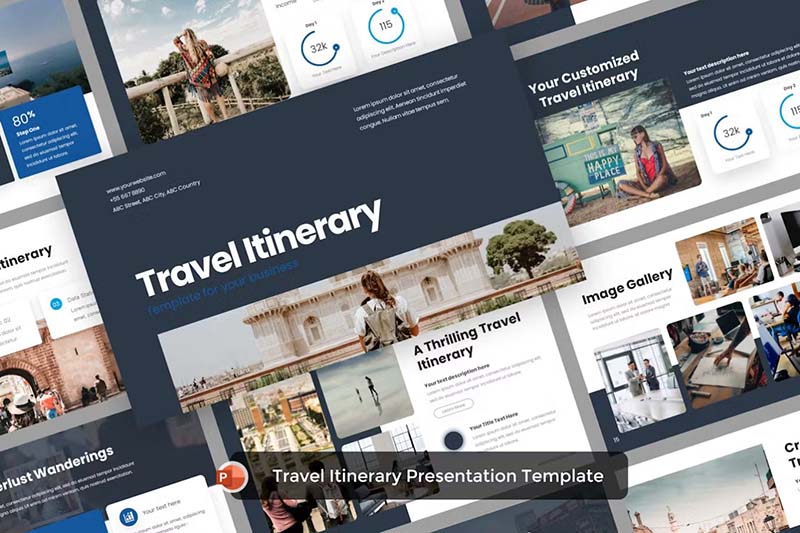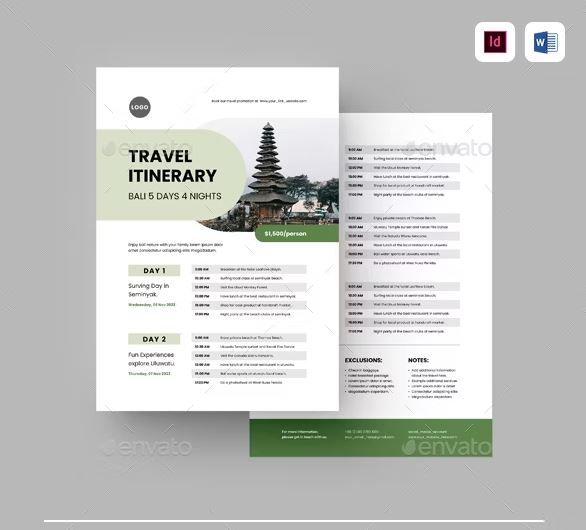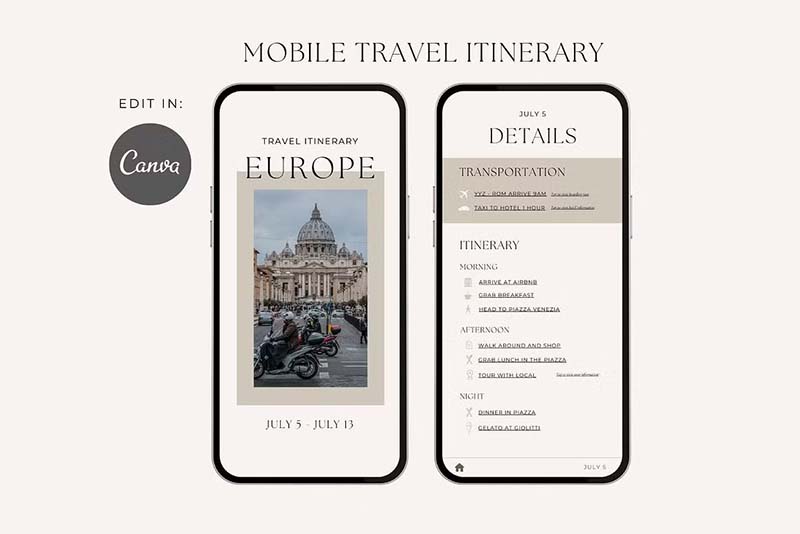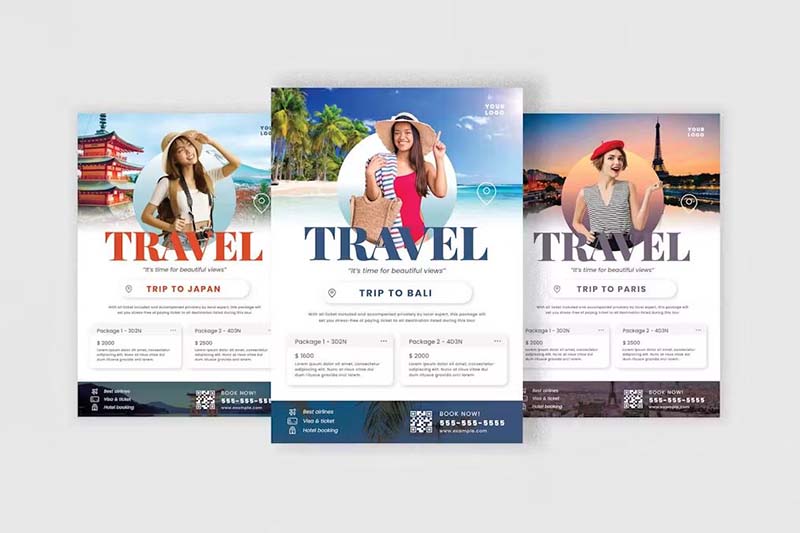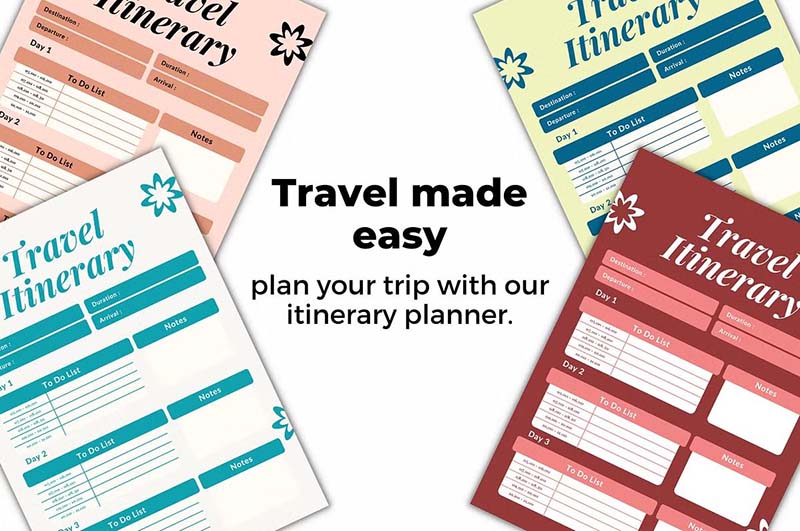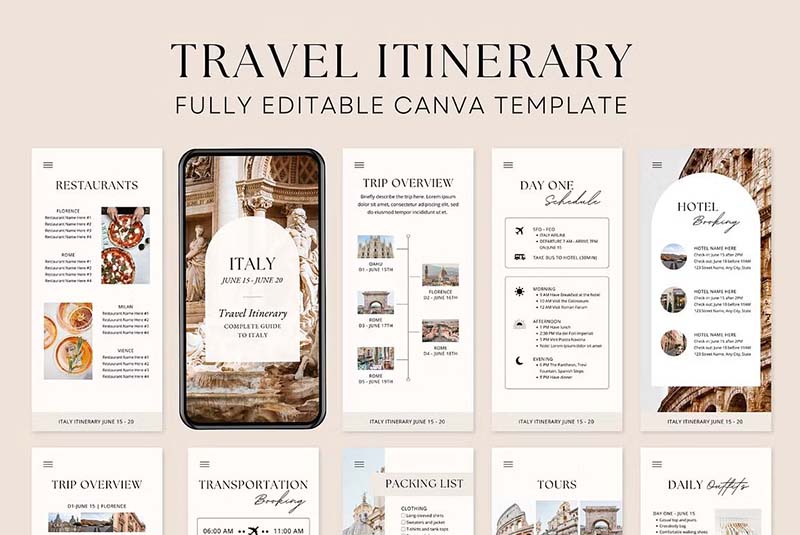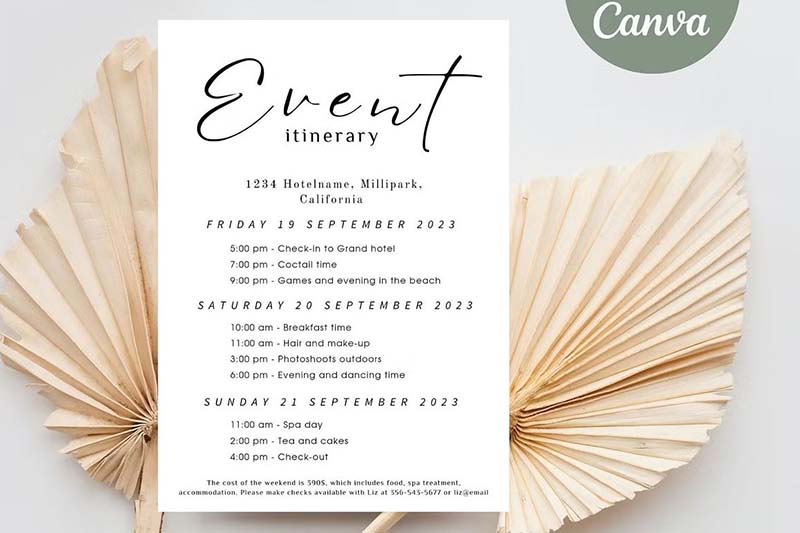Crafting the Perfect Itinerary Templates: A Blend of Creativity and Organization
Travel planning can be an exciting yet daunting task, filled with anticipation and a myriad of details to consider. Whether you’re organizing a business trip, a family vacation, or a solo adventure, having a well-structured itinerary is crucial. An itinerary templates not only ensures that you have all necessary information at your fingertips but also adds a creative touch that can enhance your travel experience. Here’s how to craft the perfect itinerary templates, blending creativity with meticulous organization.
1. Understanding the Purpose
The first step in creating an effective itinerary templates is understanding its purpose. An itinerary serves as a detailed plan of your travel schedule, including flight details, accommodation, activities, and important contacts. Depending on the trip’s nature, the itinerary can vary in complexity:
- Business Trips: Focus on meetings, conferences, and networking events.
- Family Vacations: Include activities for all ages, leisure times, and dining options.
- Solo Adventures: Highlight exploration spots, cultural experiences, and safety information.
2. Choosing a Format
Choosing the right format is essential for usability. Popular formats include:
- Printable PDFs: Ideal for those who prefer a physical copy.
- Editable Word Documents: Allow for easy updates and personalization.
- Digital Tools: Apps like Google Docs, Trello, or specialized travel apps offer real-time updates and accessibility on the go.
3. Key Components of an Itinerary Templates
A comprehensive itinerary templates should include the following sections:
- Header: Include trip title, dates, and a small image or icon representing the trip’s theme.
- Daily Schedule: Break down the trip day by day, including times and locations for each activity.
- Flight Information: Details of flights, including times, flight numbers, and terminal information.
- Accommodation: Names, addresses, check-in/check-out times, and contact numbers.
- Transportation: Information on rental cars, public transport schedules, or taxi services.
- Activities and Reservations: Booked tours, restaurant reservations, and must-see attractions.
- Emergency Contacts: Local emergency numbers, embassy contacts, and personal emergency contacts.
- Notes Section: Space for additional notes, packing lists, or reminders.
4. Incorporating Design Elements
The design of your itinerary should be both functional and aesthetically pleasing. Here are some tips to elevate your template:
- Color Scheme: Use a cohesive color palette that reflects the mood of your trip. Soft pastels for a relaxing vacation, bold colors for an adventurous trip, or professional tones for business.
- Typography: Choose easy-to-read fonts. Use different font styles or sizes to distinguish between headers and details.
- Images and Icons: Add small images or icons to represent different sections. For example, a plane icon for flight details, a bed icon for accommodation, or a fork and knife for dining.
- Borders and Dividers: Use lines or borders to separate different sections, making the document easier to navigate.
Fully Editable Travel Itinerary Template
Travel Itinerary PowerPoint Presentation
Travel Itinerary Flyer – MS Word & Indesign
Mobile Editable Travel Itinerary
Bachelorette Itinerary Template
Travel & Itinerary Flyer Template
Minimalist Travel Itinerary Planner
Digital Travel Itinerary Template
Wedding Itinerary Template
Event Weekend Itinerary Card
Olives Bachelorette Itinerary Card
5. Personalization
Personalization adds a special touch to your itinerary:
- Cover Page: Create a cover page with the trip’s title, dates, and a cover photo.
- Traveler Information: Include names and any specific needs or preferences of the travelers.
- Quotes and Notes: Add travel quotes or personal notes to inspire and excite.
6. Using Online Tools and Templates
Leverage online tools and pre-made itinerary templates to simplify the process:
- Canva: Offers customizable itinerary templates with a range of designs.
- Google Sheets: Ideal for those who prefer a more data-driven approach, allowing easy sharing and collaboration.
- Microsoft Office Templates: Provides professional and easily editable templates.
7. Practical Tips
- Keep it Simple: Avoid overcrowding the template. Focus on essential information and keep it concise.
- Accessibility: Ensure the itinerary is easily accessible to all travelers. Consider printing copies and saving digital versions on mobile devices.
- Regular Updates: Update the itinerary as plans change to keep everyone informed.
Crafting the perfect itinerary templates requires a balance of creativity and practicality. By understanding the purpose of the trip, choosing the right format, including key components, and adding personal touches, you can create a tool that enhances your travel experience. Utilizing online resources and templates can streamline the process, ensuring that your itinerary is both beautiful and functional. With a well-designed itinerary, you can focus on enjoying the journey, knowing that every detail is meticulously planned and easily accessible

